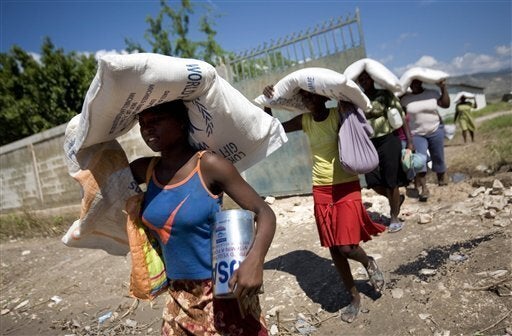
Food prices hit record highs in January, sparking fears of a new global food crisis. The World Bank's food price index rose by 15 percent between October 2010 and January 2011. This is 29 percent above its level a year ago and only 3 percent below its 2008 peak. With food scarcity increasing in many countries, world leaders are trying to understand the causes of the crisis and scrambling for solutions.
One cause is the neglect of agriculture, especially in agricultural economies, over the past fifteen years. The resulting slowdown in productivity gains has prevented food availability from keeping up with rising demand.
The food crisis of 2007-08 was the first warning that the development community needed to renew attention to agricultural economies. In response, investments in agriculture and agribusiness have risen, not only at the World Bank Group but also among other multilateral and bilateral agencies. But increased investment alone is only a partial solution. Although development assistance rose to over $8 billion in 2008 from an average of $3.5-$4.5 billion per year between 1998 and 2004, food production is still below where it needs to be to meet the growing challenges. Investments need to be accompanied by policy changes aimed at enhancing agricultural productivity.
There is another, more ominous cause, however. Natural catastrophes have affected an unprecedented number of people in already-struggling agricultural communities. Devastating floods in Australia, Brazil, Pakistan, Sri Lanka, and West Africa, and severe heat and droughts in the former Soviet Union -- all within the past nine months -- have taken a toll on food availability.
To achieve sustainable agricultural growth, policies need to confront the effects of a warming planet. The increased frequency of natural disasters is just one effect of the climate change that stresses agricultural systems. Other effects range from more volatility in water sources to complete destruction of agricultural crops as occurred with the 2010 flood in Pakistan. The IMF projects that price effects from weather-related crop damage, which was greater than expected in late 2010, will continue through the 2011 crop season. It also anticipates that rising food prices are likely to affect the urban poor in particular, given the high share of food in their consumption baskets.
Even countries that are growing despite the recent financial crisis are affected by the consequences of climate change. According to the joint report from the India Council for Sustainable Development and China Council for International Cooperation on Environment and Development, India and China are at risk of the impact of climate change as it may affect the yield of major crops like wheat, maize, and rice. The report also mentions that China has been experiencing precipitation changes, which have increased the frequency of floods and droughts and raised the sea level in coastal areas over the past 50 years. This also seriously affects agricultural sustainability.
To find solutions to climate-related food scarcity, research is needed on the linkages between climate change, agriculture, and food shortage. Through such investments, international organizations and donor countries can potentially improve the readiness of countries to deal with the effects of climate change and focus analytical work on identifying the direct links between agricultural production and climate change. But for research and innovations to be effective, the appropriate technology has to be adapted for use in different farming systems -- and it has to reach farmers.
Agricultural growth is vital to poverty reduction, particularly in the poorest countries, where agriculture provides a livelihood for a large share of the population. From June 2010 to January 2011 rising food prices have driven an estimated 44 million people into poverty in developing countries. The reversal in the decline of agricultural investment is good news, but for this added emphasis to make a difference, there also need to be policy actions to foster higher productivity, and the already visible impacts of climate change need to be addressed.